Secret blush notes of the Sinaloa Keitt Mango
American consumers are often misled into believing that high-quality produce is always uniform, season after season. This couldn’t be further from the truth. Not all mangoes are the same, and that’s something to celebrate. Take the Sinaloa Keitts, for example—these mangoes don’t fit the typical image. Instead of uniform green, they arrive with a mix of yellow, pink, green, and orange blush, with darker speckles. Pretty pastel hues that look nothing like Keitt mangoes from other regions.
This difference is not a flaw but a testament to the beauty of variety. By understanding these nuances—whether it’s varietals, regions, or seasonal changes—we can better appreciate the true quality in both taste and appearance. Sharing this knowledge helps everyone savor more flavor, and in this case, more #MangoJoy.
Without a clear understanding of the pastel hues of the southern Sinaloa Keitts and only seeing them on the trees in the green stage as I had never visited the farms in August, I too though there was a problem. But then I spoke to Jorge Crespo ( aka the Crespo Mango Man), one of the Crespo brothers responsible for the growing operations alongside his brother Roberto. He shared that the Keitts from Sinaloa, are entirely different, special he said. Depending on the weather, water, and soil health, they can appear darker or lighter each season. This season, the crop has incredible blush tones of yellow and pink that are more dominant than the green.
According to Jorge Crespo, there are several reasons for this. The closer the crop is to the equator; the more likely blush tones are to appear on the fruit. Blush tones, after all, are a product of the sun, influenced by varietal and other factors such as soil, water, and foliage. The Crespo crop in Sinaloa consists of small, well-pruned trees with minimal foliage, allowing sunlight to reach all surfaces of the fruit. The orchards are situated at a favorable latitude within the Tropic of Cancer, providing ample sun exposure throughout the day. Contrary to popular belief, the Sinaloa crop of mangoes stays on the trees longer than any other imported mango. Much of the blush intensifies and deepens at the end of the ripening cycle. We’ve been taught that Keitts don’t change color as they ripen, which is true for those that are mostly green with minimal blush. But those with significant blush do change tones, often fading into pale yellow and pink. (Fun fact these pink and yellow-hued Keitts are highly coveted in Japan.)
Jorge also explained that the health of the soil enhances the trees’ ability to develop blush. Mango trees thrive in rich, organic soil with good drainage. While they need plenty of sunlight to attain blush tones, in seasons where the soil is less rich, blush is less likely to develop.
California Keitts, growing at a significantly higher latitude, receive less overall sunlight and less intense sunlight than those in Sinaloa. The larger trees in these orchards, with more foliage, produce shade, retaining the green color in most of the crop.
Keitt trees, originally from Florida, were reportedly grafted from the Indian Brooks varietal, explaining their late season ripening and rapid growth. Keitts remain one of the most commonly grown mangoes in Florida, both in backyards and commercial production. This varietal is also grown commercially in Israel, Australia, Puerto Rico, other Caribbean islands, and, of course, in Mexico and California. While the blush tones on the fruit from each of these diverse regions may differ, they all share the basic characteristics of the Keitt Mango: long oval shape, white speckles on green fruit, darker speckles on more blushed fruit, fiberless except around the pit, small pit yielding a higher flesh-to-pit ratio, and a slight lemon flavor.
Have I made you blush yet? Read more about the Keitt Mango here.
See for yourself!

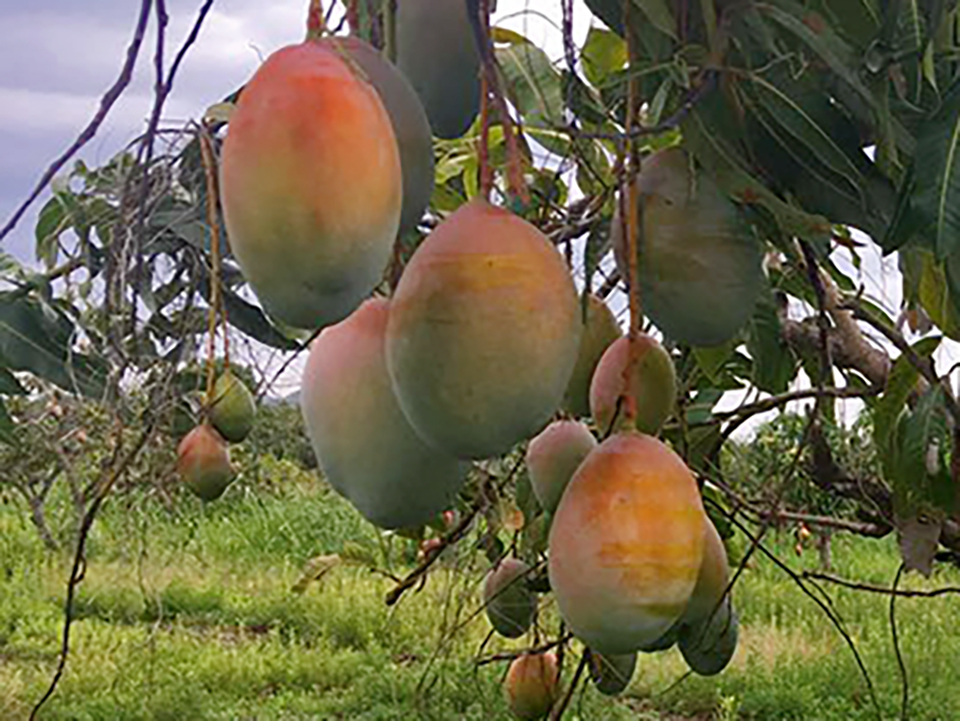
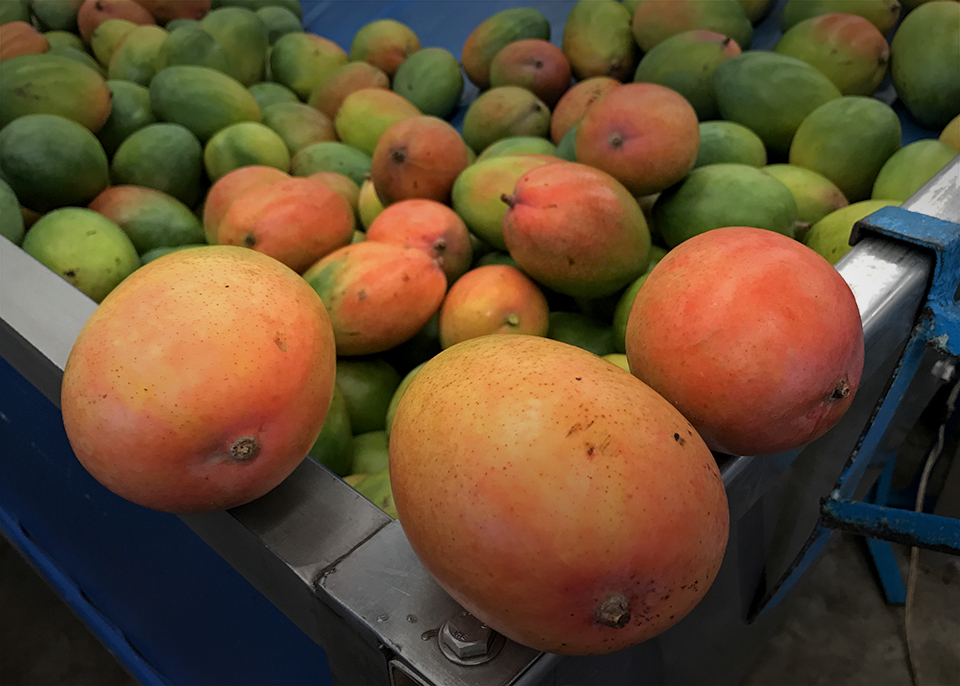






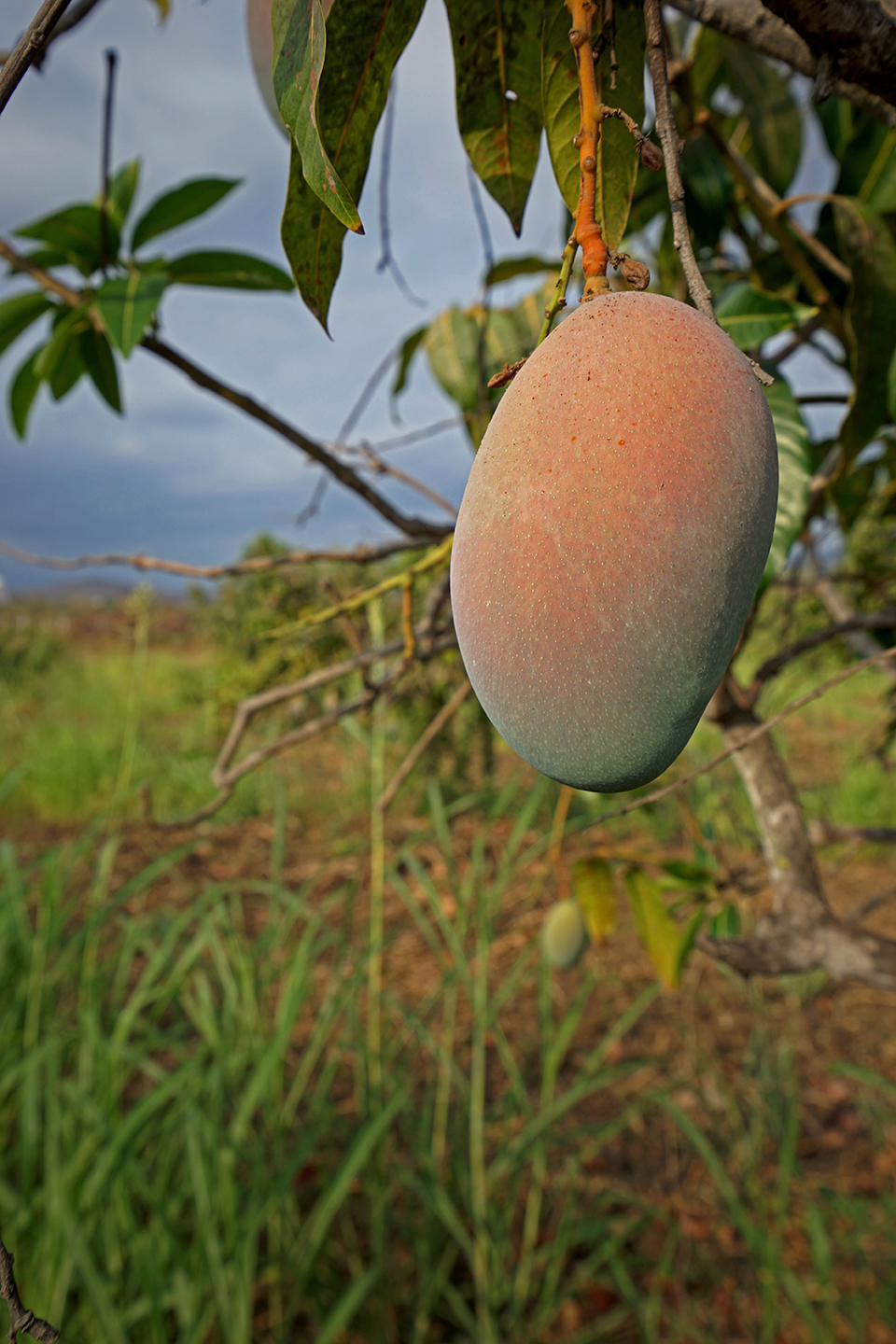
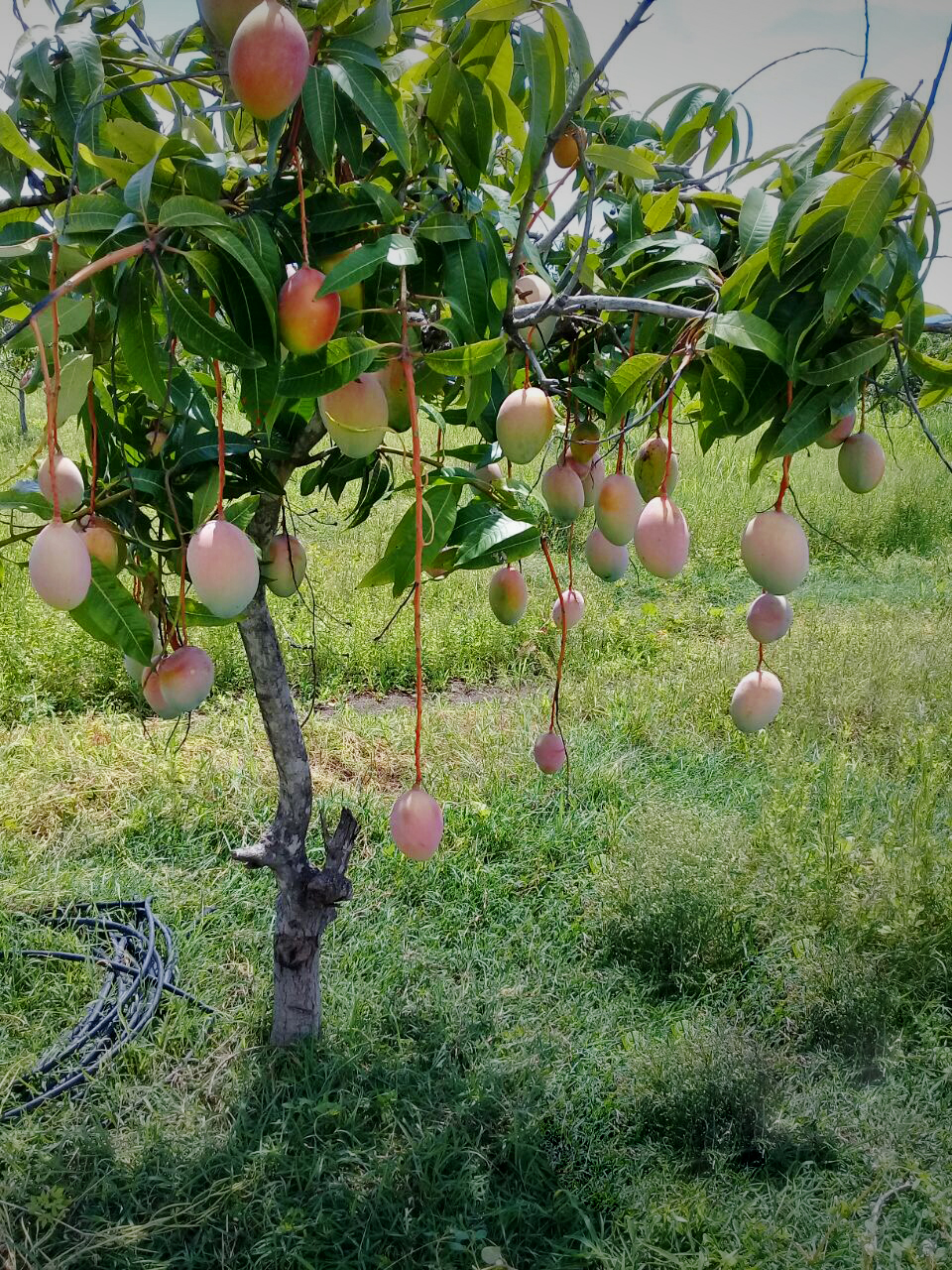

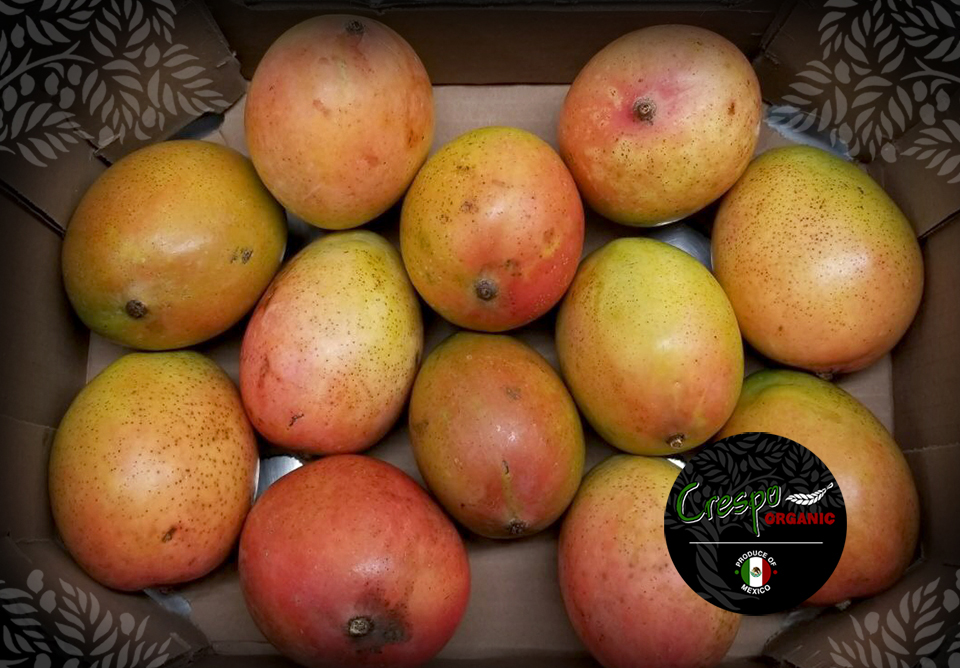


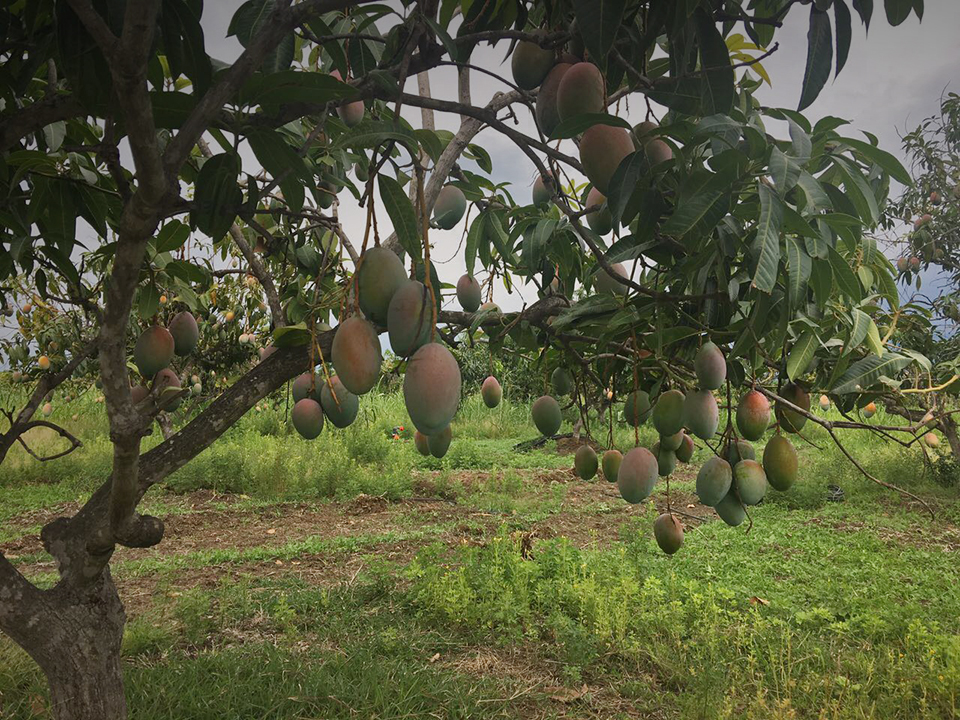


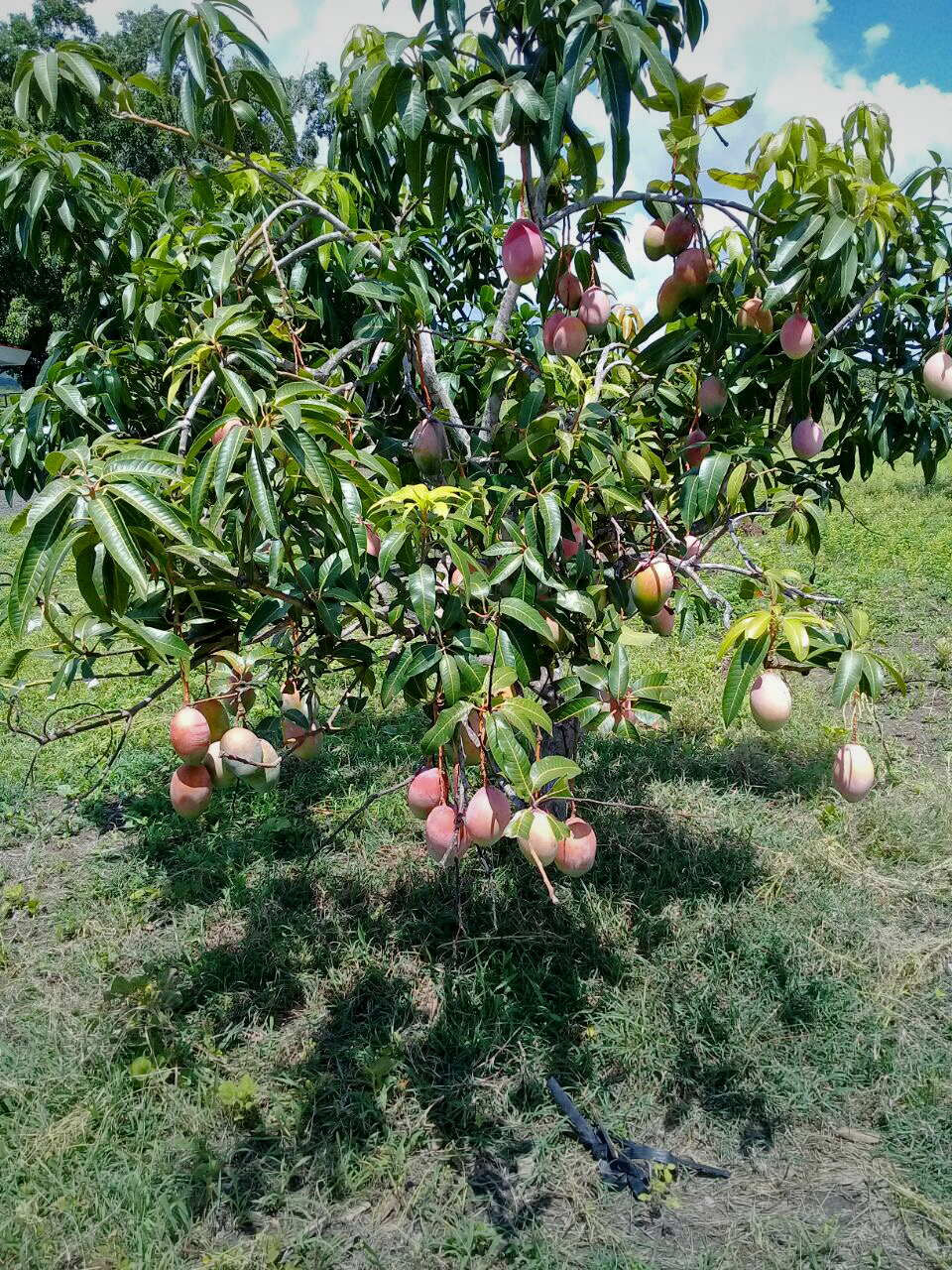





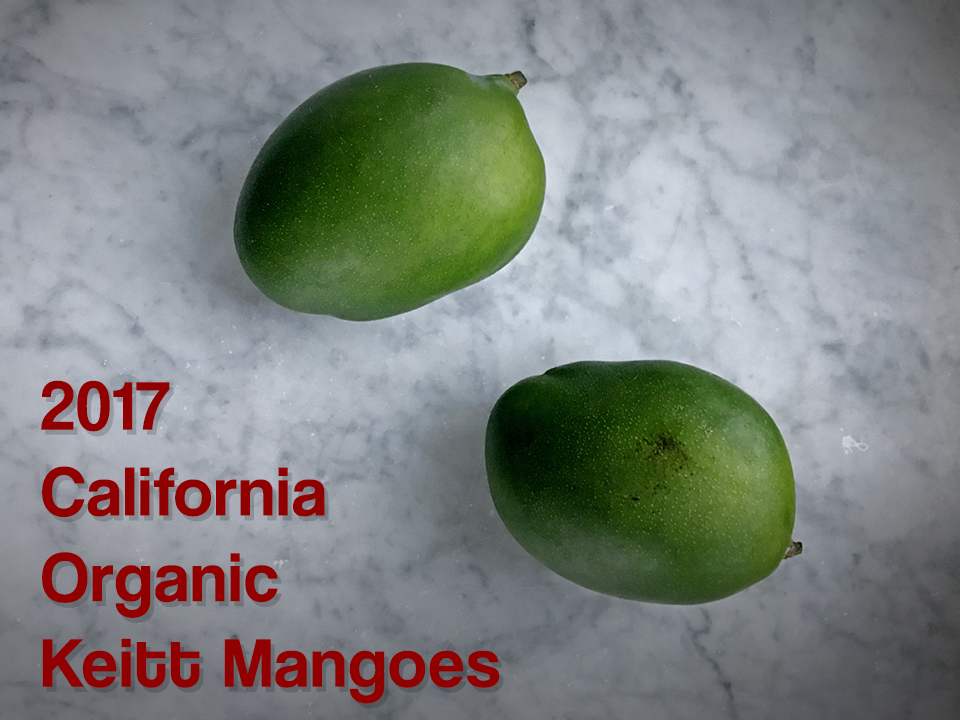

























No Comments